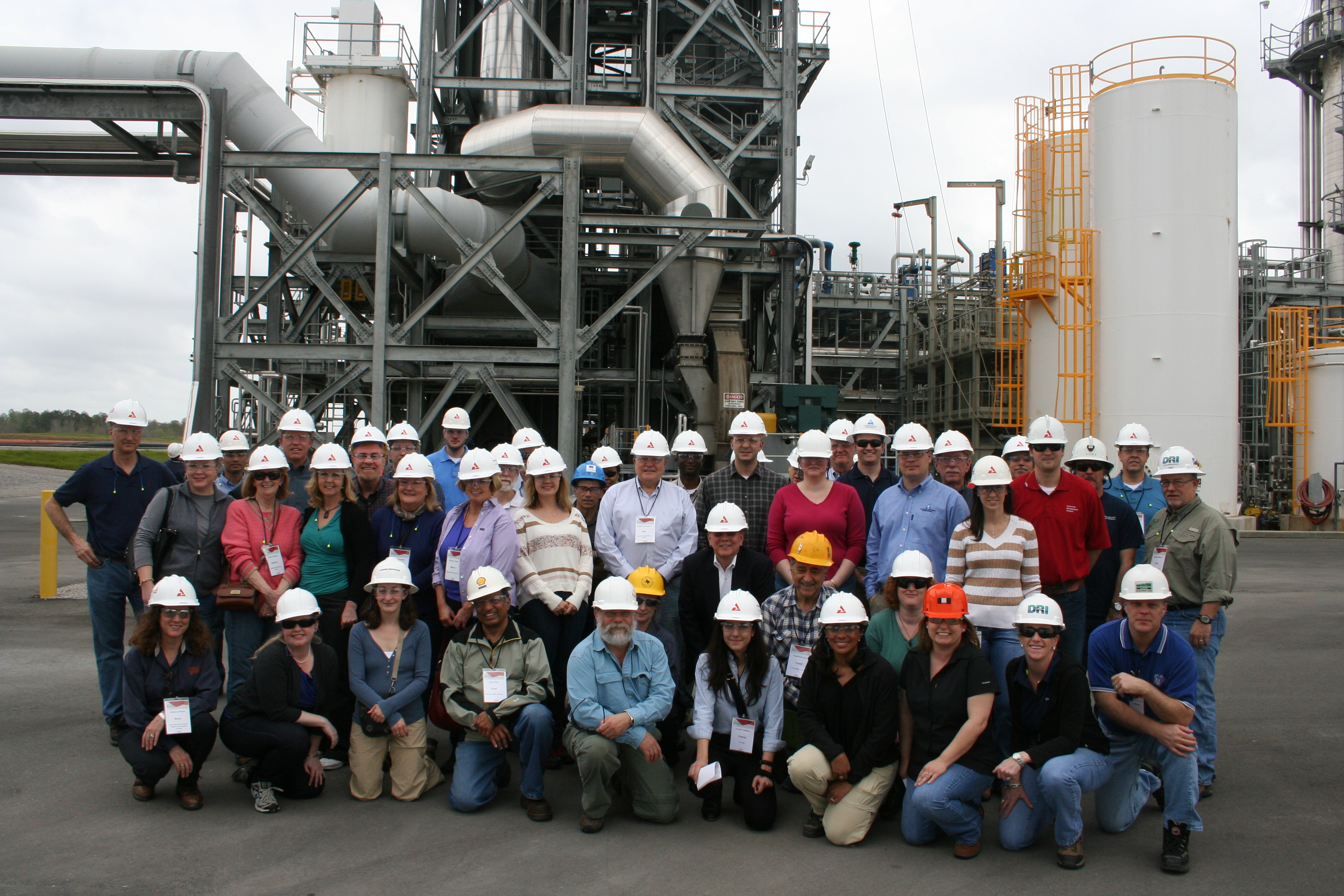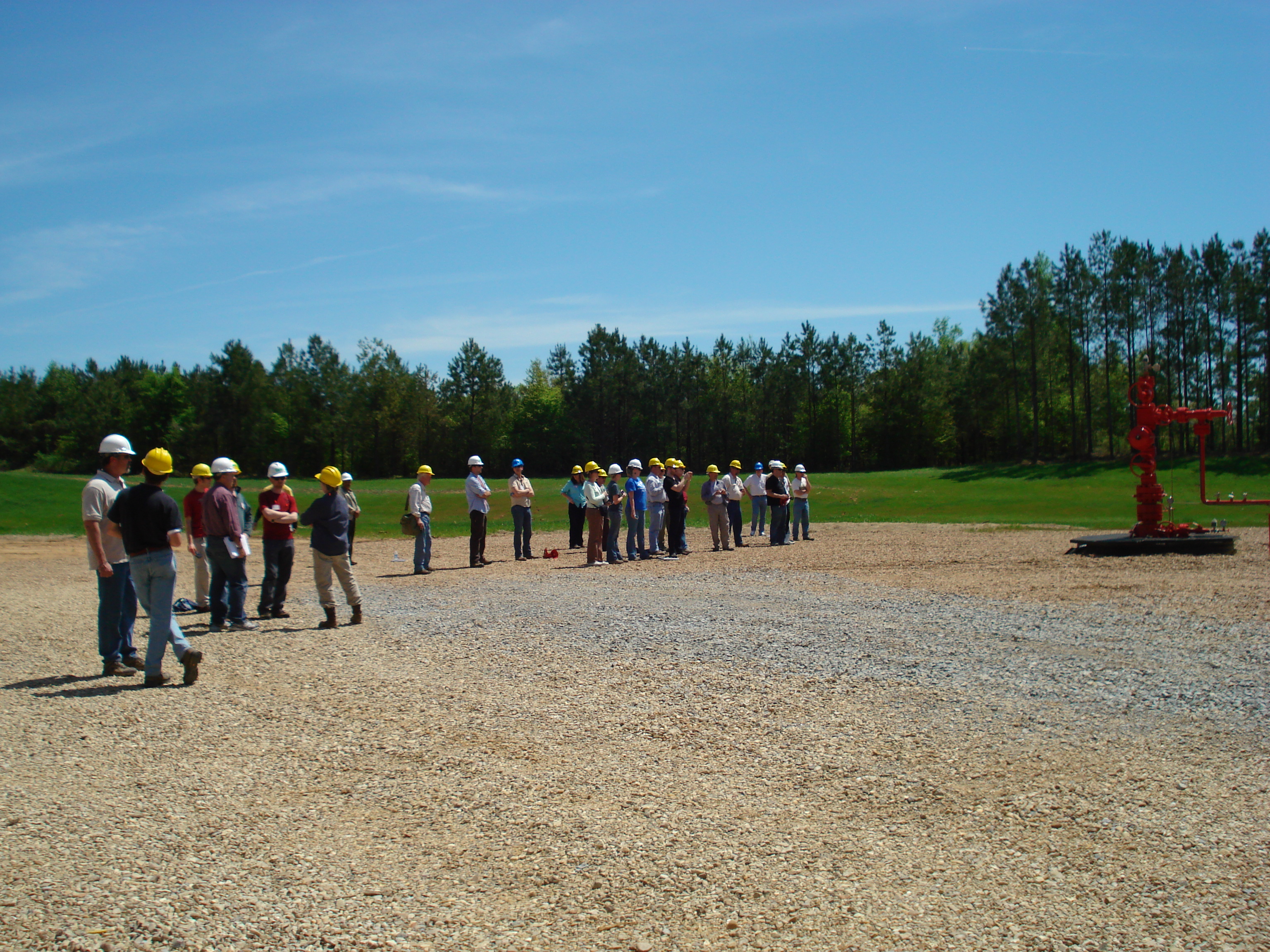Carbon Storage Atlas
- Project Highlights
- Unexpected Findings
- Advice for Storage Operators
- Project Outreach
- Project Commercialization
- Contact Information
- The Southeast Regional Carbon Sequestration Partnership’s (SECARB) Cranfield project in Mississippi was one of the earliest projects worldwide to inject and monitor 1 million metric tons of carbon dioxide (CO2).
- The casing-deployed crosswell electrical resistance tomography (ERT) tool at Cranfield is the deepest worldwide and the first to be tested in the United States at a geologic storage project. The ERT has been successful in producing images that show daily changes in CO2 saturation.
- In 2010, the international Carbon Sequestration Leadership Forum (CSLF) recognized the Cranfield project for its outstanding accomplishments in advancing carbon capture and storage (CCS) monitoring, verification, and accounting (MVA) technologies. In November 2013, the Citronelle project in Alabama was also recognized by CSLF.
- SECARB’s Citronelle project in Alabama was the world’s largest fully integrated CO2 capture, transportation, and storage project utilizing CO2 from a coal-fired power plant until late-2014, when SaskPower commissioned a 115-megawatt-electric (MWe) Shell Cansolv CCS facility on Boundary Dam Unit 3.
The most surprising finding of both field projects is how easily carbon dioxide (CO2) was injected. At the project start, concern was high about attaining the large volume injection rates. Many project management difficulties were encountered in both of the Southeast Regional Carbon Sequestration Partnership’s (SECARB) injections (the Cranfield project in Mississippi and the Citronelle project in Alabama), and a lot of work went into selecting a site and designing an injection well for successful operation, as well as overcoming many logistical hurdles. However, when the CO2 was flowing in the pipe and down the well, operation was simple. At the surface it was silent. SECARB could see the downhole and surface gauges moving to measure injection, but without this evidence one could not detect the operation.
Investment in project planning pays off. Scoping of project details to a very high resolution is key to avoiding risks and bringing a project to a successful conclusion. Many project elements interlock, meaning that excellent communication among parts of the project and through all stages is essential. Planning in the early stages of a project for interlocking components includes the schedule of carbon dioxide (CO2) capture, as well as planning for shutdown and possible end-of-project projections. This schedule allows the geotechnical elements of injection interval(s), area of review, characterization focus, modeling, and monitoring design to be fit-to-purpose. As designs advance, the need for detailed communication increases, as design optimization in one part impacts other parts. In many cases, optimization is not the same across all stages and trade-offs must be explicitly evaluated. For example, how can the wells available to the project be handled so that they feed data to characterization, to operation, and to monitoring? Coring a well to provide the best quality data for characterization may allow washouts to develop, which will reduce the quality of the cement job.
It is important to integrate and plan over the entire project. For example, it might be attractive to compartmentalize, possibly to different vendors, surface and deep subsurface characterization and monitoring, because in general these activities draw upon different skills. However, in designing effective surface-leakage detection approaches, data such as gas isotopic composition with depth that is obtained only via mud logging performed in deep wells may be the most effective data to support leakage attribution assessment at the surface.
The Southeast Regional Carbon Sequestration Partnership (SECARB) has a robust and active outreach program. The Southern States Energy Board (SSEB) leads international, national, and regional outreach efforts, and field teams led their respective site-specific public outreach. Conducting effective public outreach includes listening, sharing information, addressing concerns, and communicating project risks early and often. Throughout the phases of the project, team members shared information about the project through numerous international knowledge-sharing events, presentations, and poster sessions at conferences and workshops. Lessons learned are distributed through project presentations, emails, and social media. SSEB hosts a SECARB Stakeholder’s Briefing in Atlanta, Georgia, each year, complete with presentations and updates from a variety of team members. SSEB also hosts a briefing for southern legislators in conjunction with the Southern Legislative Conference, as well as an annual meeting for the SSEB Committee on Clean Coal Energy Policies and Technologies. Teams work to communicate with local and trade media, maintain fact sheets, and keep posted project information up to date.
Meetings were conducted with local environmental departments, local leaders, and community members to share project details, display posters, distribute handouts, and answer any questions that participants had. The mayor of Citronelle, Alabama, even hosted a public open house at City Hall in 2012. The teams hosted site visits for hundreds of visitors, with destinations including the carbon dioxide (CO2) facility, pipeline infrastructure, and CO2 injection and monitoring sites. A wide range of visitors toured field sites, including civic leaders, scientists and engineers, students, regulators, and First Nation tribal leaders. Additionally, both large-scale SECARB projects have been recognized by the International Carbon Sequestration Leadership Forum (CSLF): the Cranfield project in October 2010 and the Citronelle project in 2013.
The SECARB team has learned a multitude of lessons about outreach throughout the duration of the regional partnership. One of the largest lessons was about the importance of outreach and communication between projects, not just within project teams or to the community. Outreach can be most effective when it emphasizes the importance and the significance of the technology as a whole, not necessarily limited to the details of a specific project or company. Outreach should span between projects – the execution of this goal benefits from developing a stakeholder map and tasking a knowledgeable team with outreach for a group of stakeholders in an area with which they have experience. When team members working on outreach coordinate and communicate with people doing the same work for other partnerships, the outreach for all partnerships can improve. Lessons learned can be shared between partnerships, increasing outreach effectiveness and cultivating camaraderie between teams. The best outreach will be successful without putting a strain on time and resources or delaying project goals. The SECARB team has found it helpful to begin thinking about and researching outreach opportunities before the project is initiated.
Commercialization in the Southeast Regional Carbon Sequestration Partnership (SECARB) region advanced very quickly and deployed Regional Carbon Sequestration Partnership (RCSP) results almost in real time. Commercial capture from steam methane reforming at the Air Products hydrogen facility in Port Arthur, Texas, was developed in part based on the confidence provided by successes in modeling and monitoring at the Cranfield project in Mississippi. The monitoring program used for the Air Products program, deployed at Denbury’s Hastings field, Texas, was streamlined and optimized using lesson learned at Cranfield. At the same time, the lessons learned as a result of the Mitsubishi Heavy Industries (MHI) large pilot at Plant Barry that supplied carbon dioxide (CO2) to the Citronelle project in Alabama provided enough confidence to issue the commercial assurances required to move to full-scale capture at the Petra Nova project in the Houston, Texas, area. Lessons learned from multiple RCSP projects were used to optimize commercial monitoring for the Petra Nova project. Interest in commercial project development in the SECARB area continues to grow, with the main driver for numerous developing investments being the value of 45Q using high-purity sources and injecting into saline formations.
SECARB Contact Information
Southern States Energy Board
6325 Amherst Ct
Norcross, GA 30092
(770) 242-7712
Program Management:
Kenneth Nemeth, SSEB Executive Director, nemeth@sseb.org
Kimberly Sams Gray, SSEB Managing Director, gray@sseb.org
Gerald R. Hill, Ph.D., SSEB Technical Advisor, jhill@crescentri.com
Patricia Berry, SSEB Senior Geologist, berry@sseb.org
Leigh Parson, SSEB Grants and Accounting Manager, parson@sseb.org





